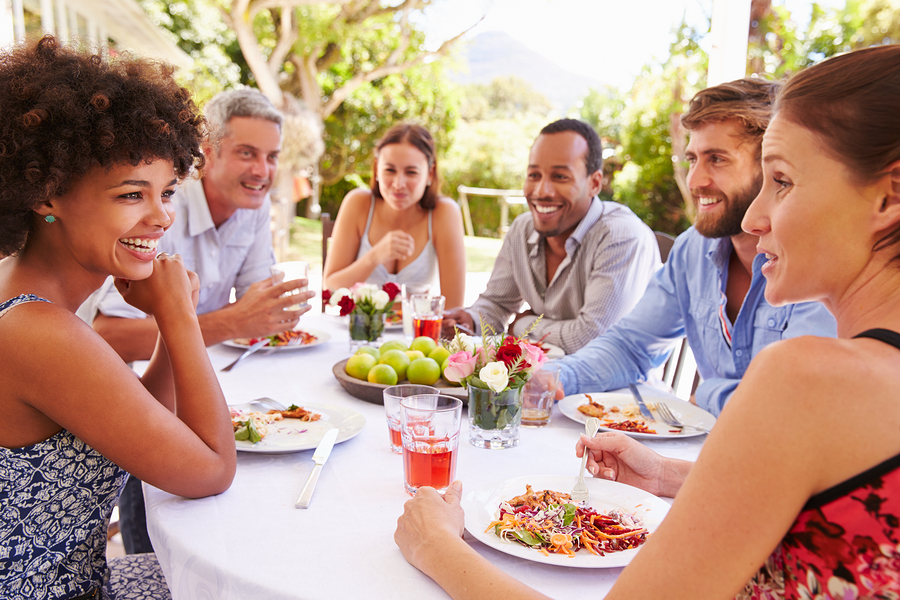Marketing and the day’s main meal
Cultural shifts and changes impact how consumers treat eating occasions. This condition becomes even more important as people no longer build their schedules around mealtimes. The script has flipped and thus mealtimes are arranged to facilitate the daily schedule.
In this new world order that puts time and where it’s spent at a premium, distinct functional requirements have surfaced around the consumer’s objectives for breakfast and lunch. Breakfast now orbits the purposeful necessity of energy needs and is often governed by habit and routine. It’s also subject to elimination at times. Whereas lunch often falls victim to another evolving behavior – snacking. Like the start of the day, lunch serves as another fuel-stop to drive the personal engine, often while navigating a complex schedule and a fluid set of time priority constraints.
The dinner bell singularly chimes as a culinary and social oasis…
Dinner continues to hold steadfast as the clear winner in time devoted to food thinking, planning and engagement – offering a unique opportunity for brands to become enablers and participants in a personal and social culinary journey.
- Dinner is a food-forward rite where the meal and menu serve as a means to elevate enjoyment, self-esteem, creativity, exploration and social engagement.
Breakfast, lunch and snacking reside in a practical, efficiency zone. The consumer’s brain-time investment is just different than dinner. In the evening, according to The Hartman Group’s Transformation of the American Meal report, the experience around food and preparation takes on a higher level of priority and added meaning.
What does the consumer aspire to do with dinner?
Hartman reports to fulfill their expectations for:
- Good food – nutritious and delicious
- Good cooking – skillful, personalized and often from scratch
- Good company – enjoyable moments and warm conversation
So, the logistics around dinner are on another level entirely for food sourcing, creativity, time spent and energy invested by home cooks and their helpers. Simply stated, dinner is less routine, not snack-ified and works to satisfy the yearning for shared food adventure.
As a marketer could you find more fertile territory for engagement than the one meal occasion where inspiration and help are clearly needed?
Dinnertime is a clear pathway to relevant engagement
Dinner is rich connection territory and we’re not just talking about flavor profiles. Dinnertime is an open field for resonance exploration and relationship building for both CPG food and foodservice.
When the day has been too mentally and maybe even physically taxing, outsourcing the evening meal is on the agenda. That said we know from secondary studies that people prefer home-cooked meals when they can do it and believe those meals are universally healthier – as home cooks are able to control ingredients, preparations and portions.
However, when scheduling overload collides with evening mealtime needs, restaurant and other “do it for me” solutions hold sway. Meal kits sit in an interesting position as low-risk enablers of culinary exploration, while also making it easier to deliver a high-quality meal with less effort mentally and at the stove.
Ordering food for delivery or visiting a restaurant shifts the balance of time investment from culinary work to social interaction – an important component of the evening mealtime experience.
The eco-system of needs and requirements for the evening meal is a place where brands can play a pivotal role. Key direction: help make dinner meal planning and execution more enjoyable.
Areas to leverage strategically:
- Health and wellness – key to lifestyle preferences across the board. What’s the bulls-eye? Helping people bridge their interests between healthy ideals and indulgent desires. Now that higher quality food experiences have become the new healthy, the door is open to blending these two universal human needs.
- Palate planning – for the most part dinner has increasingly become a just-in-time mini-shopping event as people, often coming from work, stop at the store to shop for menu ingredients. Right there is a moment of uncertainty that can become more purposeful with the right menu ideas and curated shopping lists.
- Social connection – the social milieu around dinner is an interesting pastiche of enlivened senses, warmth, close attention and enjoyment that enables sharing and conversation. The dinner table is more than a piece of furniture. It’s a place where memorable moments and personal connection are served right alongside the main course.
If effective brand communication is dependent entirely on its relevance to consumer interests and passions, then imbuing your brand with greater meaning becomes paramount in making marketing investments work.
Knowing this, dinner is an important moment and opportunity where need and fulfillment are open territory for brand helpfulness. Also vital to note is the significance that food culture informed strategies play to secure consumer engagement in social channel and content marketing outreach programs.
- Said another way, it is often the absence of cultural resonance and connectivity that dooms brand communication to the vast pile of ignored messages.
It’s our job here at Emergent to monitor these cultural and consumer-insight conditions so we’re able to respond strategically and creatively for the brands and businesses we represent. If your strategic plan isn’t feeding and exploring these important moments of real-life consumer connection…then you’re potentially skipping the marketing meal that offers the greatest opportunity for engagement and brand growth.
Is it dinnertime yet?
Looking for more food for thought? Subscribe to our blog.
Bob Wheatley is the CEO of Chicago-based Emergent, the healthy living agency. Emergent provides integrated brand strategy, communications and insight solutions to national food, beverage, home and lifestyle companies. Emergent’s unique and proprietary transformation and growth focus helps organizations navigate, engage and leverage consumers’ desire for higher quality, healthier product or service experiences that mirror their desire for higher quality lifestyles. For more information, contact [email protected] and follow on Twitter @BobWheatley.
